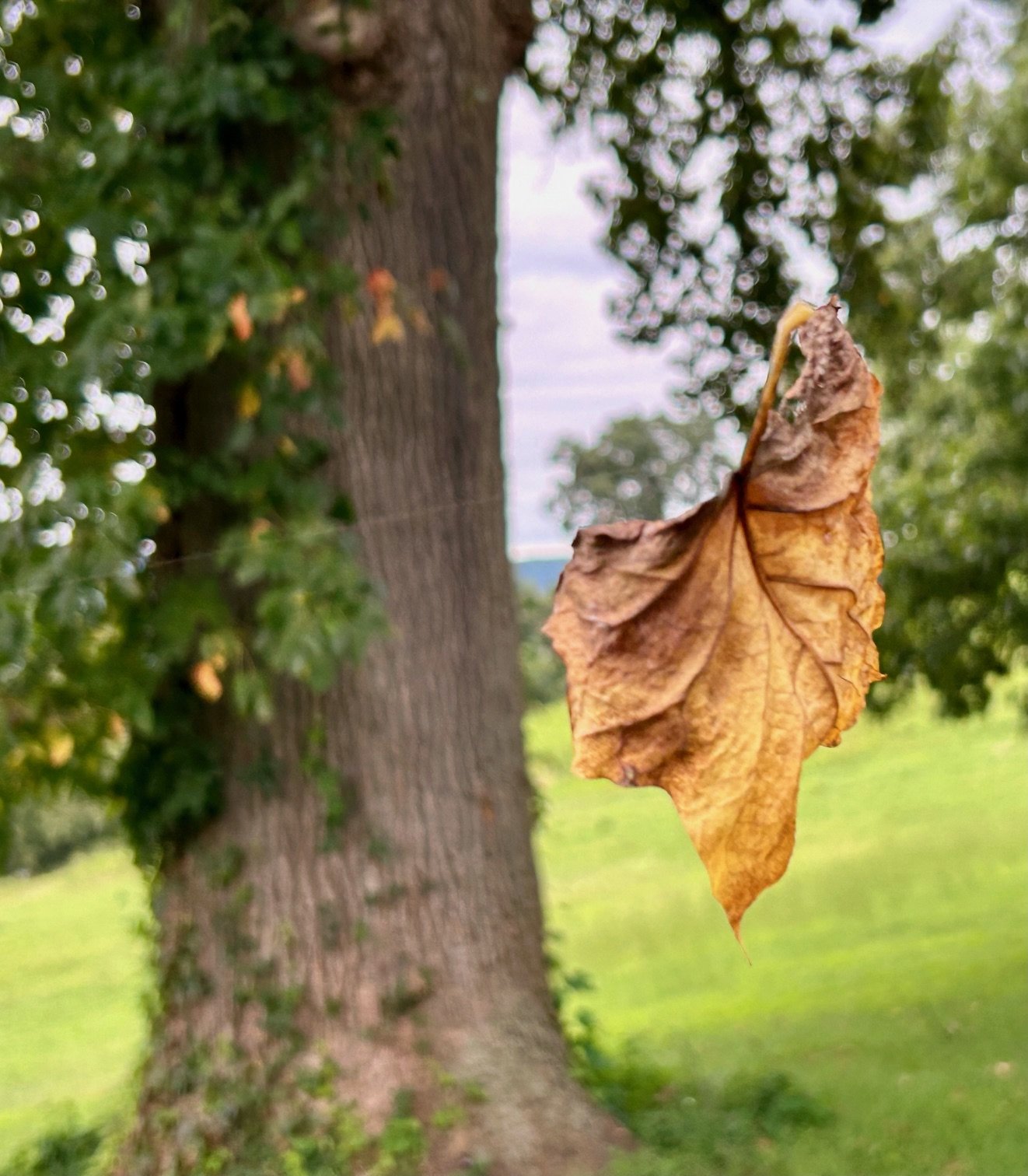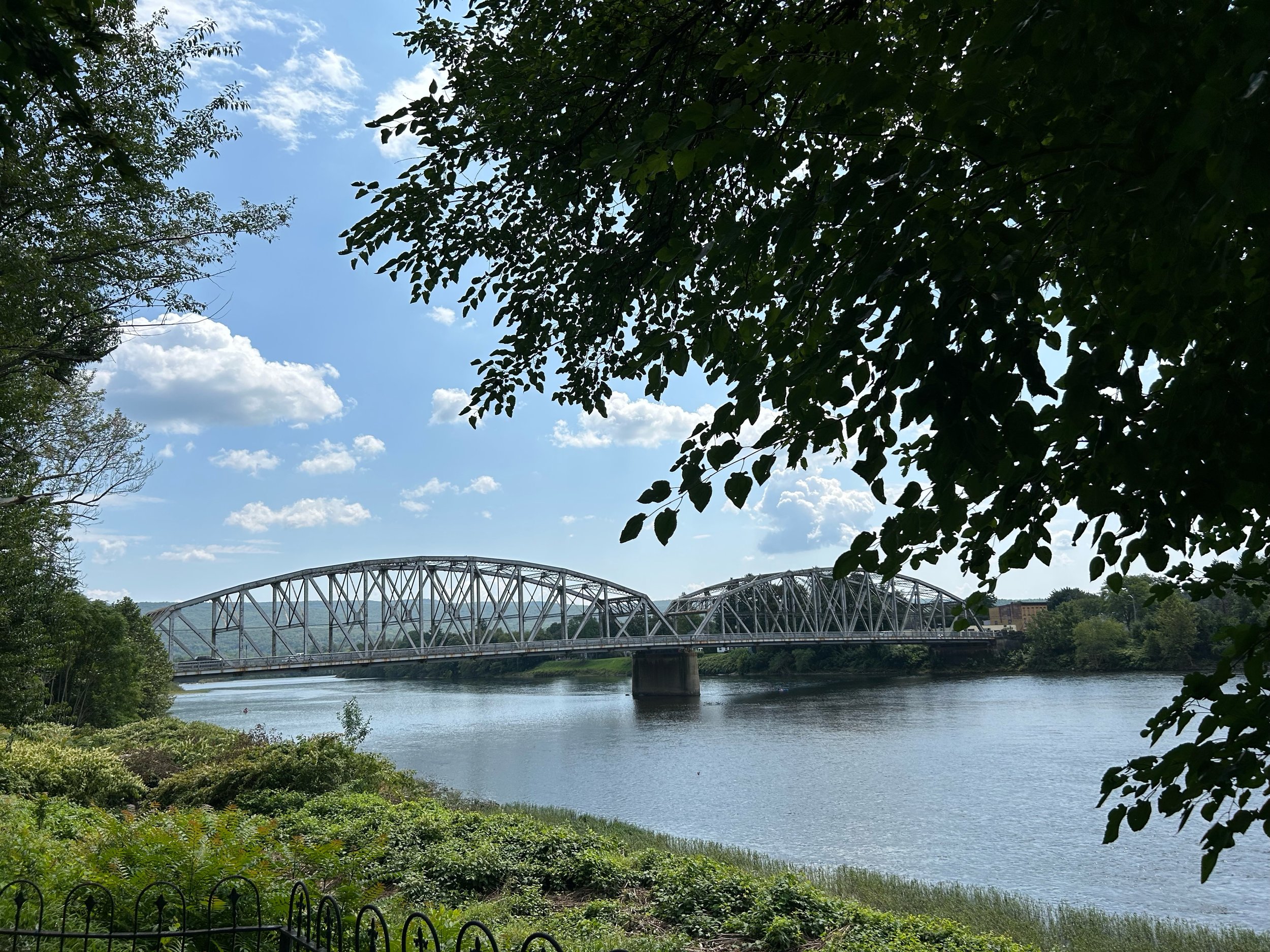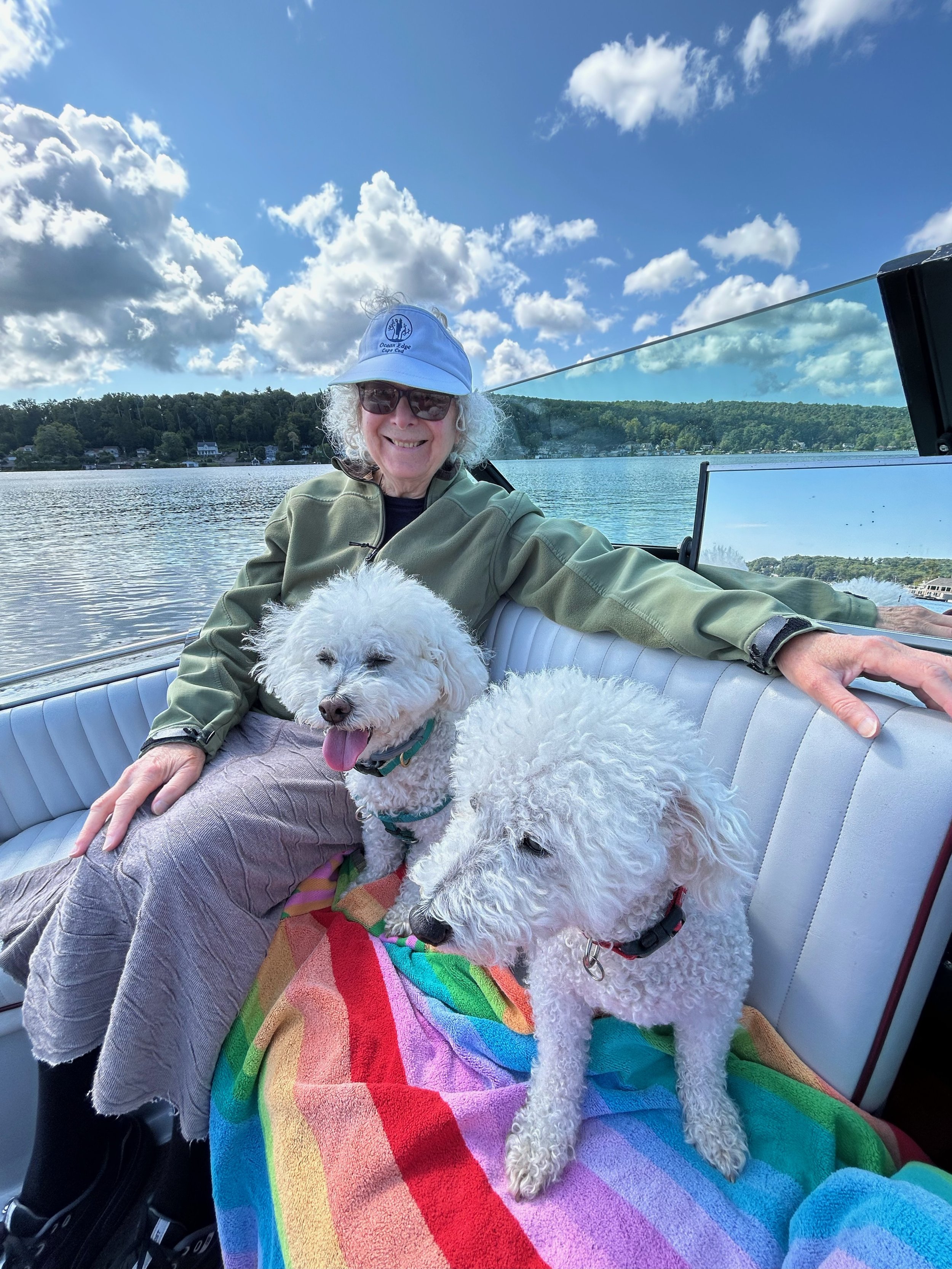Calling All Voices . . .
The Kendal Chorale welcomes new residents to join us. The 25-30 member chorale has been singing and giving 2 annual concerts for over 15 years. Led by a charismatic professional singer and director, our programs mix classical and modern music.
You don’t have to be an accomplished singer! If you can carry a tune, we would love to have you become one of us. Our rehearsals begin again on September 19, 2024, at 1:00-2:30 pm in the Gathering Room.
For more information or to join, please call Bob Singleton, ext. 1765, or Norman Sissman, Ext. 1721.
Made In NYC: Brands, Trends, and Inventions That Began in the Big Apple
The Traffic Circle
Sure, rotaries had been around for a long time, but New York City was the first place to install a traffic circle capable of coping with modern automobile traffic. The innovation came from NYC-born innovator William Phelps Eno, who had it installed in Columbus Circle in 1903. (That was the same year he wrote the world’s first traffic code, another NYC-first creation.)
The Rock ‘N’ Roll Record
Tracing the precise birth of rock ‘n’ roll is a murky affair, with smudged borders across the blues, jazz, and R&B. There is no dispute, however, about the first rock ‘n’ roll hit. That honor belongs to Bill Haley & His Comets and the single “Rock Around the Clock.” The recording session took place on the Upper West Side at the Pythian Temple studios on April 12, 1954. (The building still stands today, after its conversion to condominiums. In a bit of pop music serendipity, it’s the childhood home of Lady Gaga.)
The Ice Cream Sandwich
The ice cream sandwich remains one of the top choices for ice cream way more than a century after its invention on the Bowery. From pushcart origins circa 1899, it was just a couple of decades before a first patent was issued for an ice cream sandwich-making device. That patent was awarded to Manhattan resident Russell H. Proper on August 16, 1921. Today, 48 ice cream sandwiches are consumed in America every second.
Source: “Made In NYC,” by Ethan Wolff, March 2024, City Guide New York
Contributed by Bobbie Roggemann
I Never Knew That
The Sissman Chronicle: Kendal Neighborhood Names
About a month or two ago, I wrote a short essay for this Website about how we came to be named Kendal. Now I will follow up with some comments on the names of our 4 buildings. They were assigned by Gay Berger, the “leader” of the small group of Westchester seniors who conceived the idea of a CCRC here and worked hard for many years to make it a reality. She chose the names of 4 19th century Hudson River steamboats, perhaps to emphasize the connection of our institution with its local environment. (in fact, all the names at Kendal refer to local places, with the exception of Adirondack).
The most historically important steamship was the Clermont. It was the first steamboat ever constructed. Its inventor and builder was Robert Fulton (1765-1815). The ship was named after the Columbia County estate of the man who financed Fulton’s project, Robert Livingston (1746-1813). Livingston had achieved some widespread recognition as one of the authors of the Declaration of Independence, but he retired from politics to become a successful businessman.
The word Clermont can be roughly translated as French for “clear mountain.” When word of Fulton’s intentions circulated, most were highly skeptical that it could be done, and called it “Fulton’s Folly.” These voices were abruptly silenced on August 17, 1807, when the Clermont sailed from New York City to Albany on a 32-hour trip and returned the following day. Thus, the Clermont inaugurated the century-long era of Hudson River Steamboat pleasure cruises.
The Clermont under steam
The Mary Powell, named after the wife of a Newburgh owner of several steamboats, Thomas Powell, was built in 1861. Because it was the speediest ship on the river and one of the most lavishly appointed, it became known as the “Queen of the Hudson.”
The Mary Powell gliding along the Hudson
The Alida, an earlier ship, dating from 1847, was also a fast ship. I could not find an explanation of the origin of its name. The “Alida,” launched April 16, 1847, 265 feet in length, was built as a dayboat for the Hudson river traffic, making regular round trips between New York and Albany. With a speed of over 20 miles an hour, her best time was made on May 6, 1848, when a trip including 7 landings was made in 8 hours and 18 minutes.
The Alida, making daily round trips between New York and Albany.
Robert Fulton was, of course the inventor of the steamboat, but it was also the name of 1 of them, built in 1909. Built in Camden, New Jersey, by the New York Shipbuilding Co. for Hudson River Day Line, she operated from 1909-1954. In 1956, she was sold for conversion to a community center in the Bahamas.
The speedy Robert Fulton
Steamboat Travel
The steamboats were lavishly furnished, particularly in their dining rooms. These featured crystalline chandeliers, the finest china, cutlery and linens, and desirable menus. The ships stopped at many towns lining the river’s shores. They were mostly safe, although occasionally captains raced other ships, sometimes leading to boiler explosions and sometimes running aground! One feature of the early ships that is not often depicted in illustrations was that the early fuel was wood, causing black plumes of smoke to belch from the ship’s smokestacks.
Taking a river cruise was enormously popular in the 19th century. Over 60 ships were built to accommodate the crowds. One historian estimated that in 1851 almost a million people took a trip. Residents of New York City were eager to escape the un-airconditioned heat and miasma of the urban summer. Visitors considered no stay in the city complete without a river cruise. The early price of the trips was 1 dollar for every 20 miles traveled; meals were 50 cents. The ships stopped at many of the towns along the river. One particularly common destination was Haverstraw, from which it was a short carriage ride to the beauties and pleasures of Bear Mountain State Park. The development of the railroads and, most importantly, the availability of automobiles ended the steamboat era.
Lastly, most of you have noticed that models of the Mary Powell and the Clermont are on display in the first-floor lobbies of their respective buildings. These were built by a founding resident, Ariel Verdesi. He used no kits or preformed parts; he studied drawings and some reproduced plans for the ships and constructed his detailed to-scale models. I consider them among the finest examples of model building I have ever seen.
Norman J. Sissman
Sleepy Hollow's Climate Action Plan
The Village of Sleepy Hollow is in the process of developing a Climate Action Plan that will provide a comprehensive roadmap that outlines specific actions that the community can undertake to reduce greenhouse gas emissions and adapt to future conditions. It sets clear, measurable goals, typically expressed as percentage reductions to be reached by the village.
The plan will detail a range of strategies and actions, such as energy efficiency improvements and sustainable transportation initiatives, to achieve these emission reduction targets. This document serves as a guideline for local governments, aiding them in contributing to broader climate mitigation and adaptation efforts.
The town’s efforts mesh nicely with Kendal’s “Values and Practices,” specifically #6:
To engage in practices that sustain and improve our environments and our planet
To learn more about Sleepy Hollow’s Climate Action planning, click below:
Indeed, we have an Environmental Stewardship Committee committed to furthering Kendal on Hudson’s engagement in conservation, sustainability, and leadership as outlined in the brochure Kendal Values and Practices. The committee continues to promote “reduce-reuse-recycle” by residents and encourage staff to commit to recycling. The committee urges reduction in the use of plastics and of energy, and supports the use of renewable energy sources and measures to lower interior and exterior pollution.
A mover-and-groover in that commitee is Anne White, whose Letter to the Editor, recently published in The Hudson Independent, extolled Sleepy Hollow’s plan and urged the governor to follow the town’s lead. To read Anne’s letter click below:
For Your Funny Bone
Contributed by Cynthia Ferguson
Contributed by Barbara Bruno
Contributed by Simone
Contributed by Donald Butt
Art by Hart
Norma had to wonder if she had ever really fit in
Working with a coach was doing wonders for Courtney's balance
Woofy decided that painting was at least as much fun as chasing squirrels
The school year was challenging--and fun
Harkins took his favorite carousel horse out for a joyride
Art and photos by Jane Hart
Landscape 2 Artist Book, by Sheila Benedis
In and Around Kendal
A Family Affair
Kendal’s community sports not one but two Alfredo Diaz-es! Father Alfredo Diaz is an integral part of the team that keeps Kendal running smoothly. Son Alfredo Diaz is an integral part of the team that keeps Kendal residents running smoothly out of our community, i.e. by driving us hither, thither, and yon. Our heartfelt thanks to both generations of Diaz!
Photo by Cathie Campbell
Our Hudson River
After the Storm
Photo by Greg Lozier
Ho-hum, just another Kendal sunset . . .
Photo by Philip Monteleoni
The Goats of Kendal
The Three Graces
Photo by Edward Kasinec
Profiles in Goat-age
Photo by Mimi Abramovitz
Don't Bother Me, I'm Busy
Photo by Mimi Abramovitz
A Friendly Visitor
A Praying Mantis on a window of the Fulton bridge, above the Terrace
Photo by Harry Bloomfeld
The Legend of Kendal Hollow?
"I know we are in Sleepy Hollow, but is this a meeting of ghosts?"
Photo (and question) by Joe Bruno
With Every Season, Turn, Turn, Turn
Photos by Mimi Abramovitz
Serenity
Photo by Edward Kasinec
Out and About
At the Rockefeller Preserve on a Late Summer’s Day: Swan Lake
Photos by Carolyn Reiss
Made In NYC: Brands, Trends, and Inventions That Began in the Big Apple
THE CHYRON/News Ticker
Most contemporary newscasts run a line of text to accompany their reporting, a concept that traces back to New York City and the first news ticker. Known as the “the Zipper,” the Motograph News Bulletin used nearly 15,000 lightbulbs to transmit the latest directly to denizens of Times Square. Engineer Frank C. Reilly put the concept into reality, launching the ticker on November 6th, 1928. The first message? HOOVER DEFEATS AL SMITH.
The Hedge Fund
Four trillion dollars are under hedge fund control these days, but a century ago they didn't exist. Benjamin Graham, an immigrant New Yorker overcoming an impoverished upbringing, came up with the concept when he founded the Graham–Newman Corp. in New York City in 1926. Credited with being behind the world's first hedge fund, Graham also made a name mentoring Warren Buffet and becoming known as the “father of value investing.”
Batman
Stately Wayne Manor is not the point of origin for Batman. Although he made many billions for Hollywood, the character's origins are with humble kids of immigrants in the Bronx. Bill Finger and Bob Kane introduced Batman to the world in Detective Comics #27 in the spring of 1939. By lore, Kane came up with the character from a bench in Poe Park, which sits alongside the final home of another famed Bronx resident, Edgar Allan Poe.
Source: “Made In NYC,” by Ethan Wolff, March 2024, City Guide New York
Contributed by Bobbie Roggemann
I Never Knew That
There Are More Trees on Earth Than Stars in The Milky Way
Astronomer Carl Sagan wrote in his 1980 book Cosmos that there were more stars in the universe than grains of sand on beaches on Earth—a statement that’s both wondrous and impossible to prove. But some scientists pondering similar ideas believe that there may be more trees on Earth than stars in the Milky Way galaxy.
The theory stems from a 2015 study that attempted to determine how many living trees could be found on the planet, by estimating the number of trees living in different environments. Tropical and subtropical forests appear to have 43% of the world’s tree population, nearly double that of frosty boreal forests found in places such as Canada, Russia, and Norway. Other regions, including the temperate biome (central Europe and the U.S. Northeast), generally have the fewest number of trees. The combined estimates per zone lead some scientists to believe that Earth is home to roughly 3 trillion trees. Compared to NASA’s estimate of more than 100 billion stars in the Milky Way, it appears that trees far outnumber the Milky Way’s sparkling orbs.
However, the scientific community acknowledges that we’ll likely never know the true number of stars in the sky or how many trees are rooted in the Earth, because there are too many factors at play. Astronomers can guess at the number of stars by observing how the galaxy rotates and calculating its mass, though not all stars are visible from Earth, and it’s impossible to count them individually to confirm the math. On Earth, humans cut down 15 billion trees annually but replace some, with an estimated 1.3 billion saplings produced in the U.S. each year in the hopes of balancing the count. After all, even if we have trillions of them, each tree on the planet is precious.
Most pine trees produce pine cones, the woodsy mechanisms through which they distribute their seeds. Some species, like North America’s eastern hemlock, produce tiny, half-inch seed pods. These pale in comparison to the Coulter pine’s pine cones, which max out at 11 pounds — the largest pine cones on Earth. Coulter pine cones grow over the course of two years and can reach up to 20 inches in length. They’re so large that they’re often nicknamed “widow-makers” because of the danger they present to people below. However, your chances of encountering a Coulter pine are relatively small, since the species — first recorded in 1831 — is not especially widespread. It’s native to the mountains of Southern California and northwestern Mexico, where the trees grow along ridges and dry, rocky slopes.
Source: interestingfacts.com
Contributed by Jane Hart
Inevitable Every Four Years: The Presidential Candidates Debate
Halloween Heads-Up
Got Teenagers? Got Nerve? Experience Thrills and Chills at the Sleepy Hollow Haunted Hayride!
Climb aboard the Sleepy Hollow Haunted Hayride and hold on to your head! All seems well when you board your hay wagon in the brightly lit streets of downtown Sleepy Hollow. The journey begins innocently enough. Rumbling off into the dark you realize too late you are heading down the Albany Post Road past the Old Dutch Church, following exactly Ichabod Crane’s flight from the Headless Horseman. Then you’re through a set of iron gates and the wagon slips into the dark woods of the hollow. Clattering across a wooden bridge, you start to hear shrieks and the sound of hoofbeats . . .
There’s a free block party on Beekman Avenue both nights to keep you entertained before your hair-raising ride through the real Sleepy Hollow. If you keep your head, you’re welcome to come back for more live music, entertainment, family activities and vendors!
Where: Sleepy Hollow Village Hall, 28 Beekman Avenue, Sleepy Hollow, NY When: October 18 and 19. Block party begins at 5 pm, hayride begins at 7 pm.
Ticket sales are online only and on-sale now. Tickets to the Sleepy Hollow haunted hayride are timed entry and specific to either Friday or Saturday night. Secure your spot early! Tickets sell fast for this popular Halloween event.
Please be careful when selecting your dates and times, as all purchases will be FINAL and there will be NO REFUNDS (unless the event is cancelled by the Village).
Also, please note it and is not recommended for some children due to its SCARY and GRAPHIC content. Ultimately, use parent discretion to decide whether the ride is suitable for your child or not...as you know your child best.
For Your Funny Bone
Contributed by Barbara Bruno
Contributed by Donald Butt
Contributed by Barbara Bruno
Art by Sheila Benedis
Landscape 1 Artist Book
Art by Hart
The Beacon Theatre was packed for Alvin and the Chipmunks’ Farewell Tour
Marlie, a nearsighted birdwatcher, was grateful for the closeup
The bubble pipe gave Woofy gravitas
Mega-influencer Platz brought lost glamour to the struggling Meow Mix brand
No, Bryce didn’t want to race Elizabeth to school at 5:00 am.
Art and photos by Jane Hart
In and Around Kendal
Reminiscences
Jean MacIntosh shared stories from more than 100 years
Photo by Harry Bloomfeld
And the audience was rapt
Photo by Philip Monteleoni
Fountain of Youth (In the field behind Regeneron, no less)
Photo by Edward Kasinec
Just Hangin’ Out
One morning, as she was walking in the park, Carolyn Reiss encountered a leaf tethered to a very long spider thread dancing in the wind like a kite, twisting and turning.
Photos by Carolyn Reiss
The Beauty of a Summer’s Day
Photo by Carolyn Reiss
A Menacing Storm
Photo by Edward Kasinec
Made In NYC: Brands, Trends, and Inventions That Began in the Big Apple
The Jewish Deli
Not a huge surprise that this is a New York invention, although you might have thought it was an old country import first. In fact, the original Jewish deli was started by the Iceland Brothers on the Lower East Side in 1888. Willy Katz joined the restaurant in 1903 and bought out the Iceland Brothers with his cousin Benny in 1910. Today you can find Jewish delis from coast to coast, in locations as random as Indianapolis, Beverly Hills, and Orlando.
Packaged Coffee
New York City gets credit for 3 innovations in the birth of coffee making its way into homes, offices, and hotel suites:
1. During the early years of the Civil War, NYC’s Lewis Osborn created Osborn’s Celebrated Prepared Java Coffee, the first ground, prepared, and packaged coffee in world history. Although it did not give the market a major jolt (the bulky pail it was distributed in probably didn’t help), it opened the door for bigger operations.
2. In 1862, the first factory in the US to make bags for loose coffee began operations in Brooklyn.
3. The big win, however, belonged to John Arbuckle and his brother Charles. They founded the Arbuckle Brothers Company in New York City in 1871 and became the first merchants to sell packaged coffee. (The coffee itself went nationwide, sold under the Ariosa brand and becoming popular enough on the frontier to be branded “The Coffee that won the West.”)
Twizzlers
Over 100 million Twizzlers are sold every year in the US, and it’s a $3,000,000,000 business globally, but the origins of the candy are small-town NYC. Two Brooklyn businesses combined forces in 1845 and sold whips and other licorice confections as Young & Smylie. They didn’t pick up the Twizzler name until after later mergers and consolidations; that licorice brand has been around since 1929.
Source: “Made In NYC,” by Ethan Wolff, March 2024, City Guide New York
Contributed by Bobbie Roggemann
What I Did on My Summer Vacation
Carolyn Reiss reports that this summer she went to visit her friend Flora on Harvey’s Lake, PA. This turns out to be near Tunkhannock, the home town of Debbie Bell— and in the middle of nowhere.
Heads up: Carolyn advises that anyone going West or back East on 84 near Port Jervis who likes homemade reasonably priced ice cream in various flavors and concoctions, along with other homemade quick foods and a picnic spot on the Delaware 1 mile off the highway, should stop at Riverside Creamery.
Though ice cream and such was clearly one of the hits of the trip, so was the beauty of the area.
Old steel bridge over the Delaware River
Hiking the waterfall trail in Ricketts Glen State Park
Boating on the lake with both dogs, and Flora at the helm
Dietrich Theater sports a mural of the famous Nicholson Bridge (aka the Lackawanna Viaduct) near Tunkhannock








































































